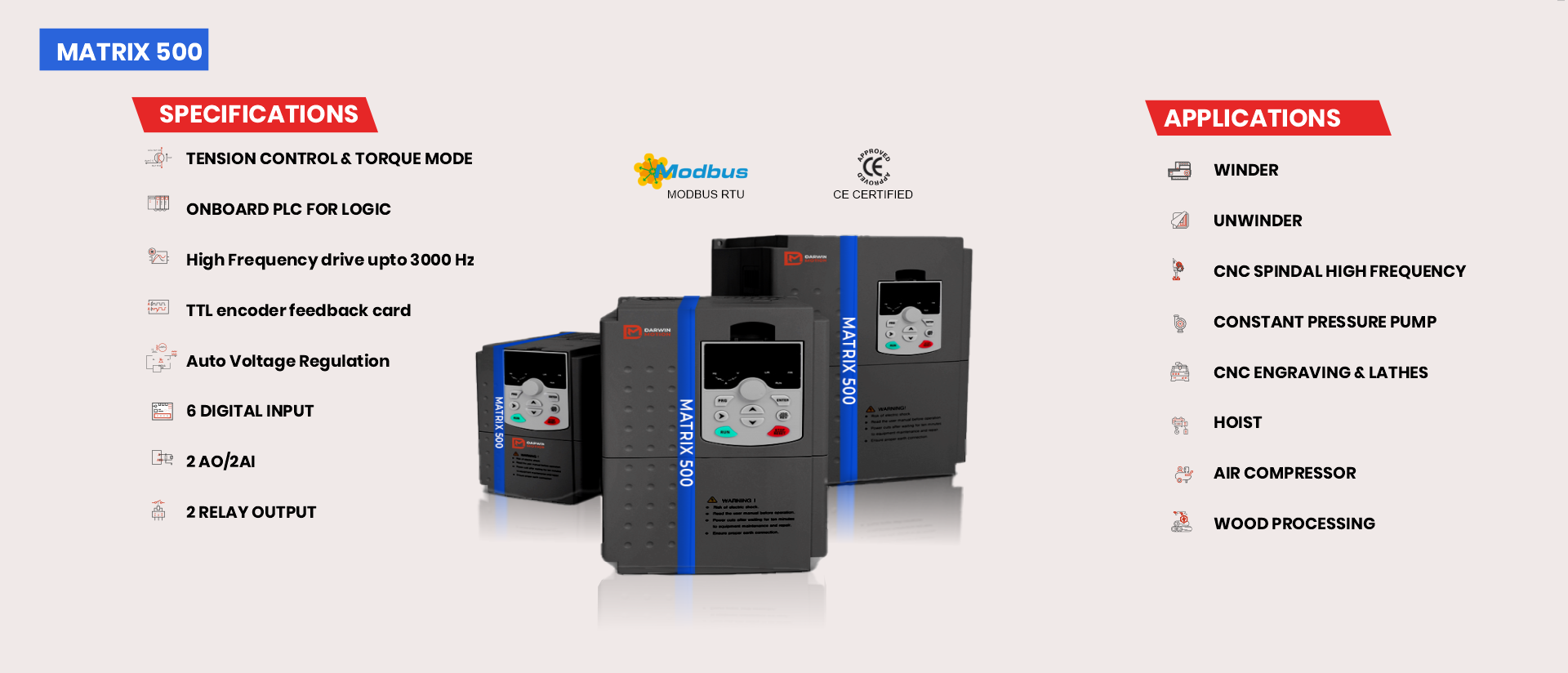Posted on 15th Feb 2024

In the realm of vertical transportation, elevators stand as essential conduits, facilitating seamless movement within buildings of all sizes. Behind the scenes of their smooth ascents and descents lies a complex interplay of mechanical and electrical systems, where efficiency is paramount. Darwin Motion Regenerative Variable Frequency Drives (VFDs) Matrix 880 emerge as a pioneering solution, revolutionizing elevator technology by not only optimizing energy consumption but also contributing to sustainability efforts.
Traditional elevator systems often rely on fixed-speed motors, which operate at a constant rate regardless of the load or demand. This approach results in significant energy wastage, particularly during periods of low utilization when elevators operate at less than full capacity. Regenerative VFD, on the other hand, offer a dynamic alternative by adjusting motor speed according to demand, optimizing energy usage and reducing operational costs.
At the heart of regenerative VFDs lies their ability to convert kinetic energy generated during elevator descent into electrical energy, which is then fed back into the building's power grid. This regenerative braking process not only minimizes energy consumption but also reduces heat dissipation, extending the lifespan of elevator components and enhancing overall system reliability.
Energy Efficiency: By precisely controlling motor speed and harnessing regenerative braking, VFDs significantly reduce energy consumption compared to traditional fixed-speed systems. This results in lower utility bills and a smaller environmental footprint, aligning with sustainability objectives.
Smooth Operation: Regenerative VFDs offer smooth and quiet elevator operation, minimizing vibrations and noise levels within the building. This enhances passenger comfort and satisfaction while also reducing wear and tear on elevator components, leading to longer maintenance intervals and lower lifecycle costs.
Space Optimization: The compact design of regenerative VFDs allows for greater flexibility in elevator system layout and installation. This is particularly beneficial in retrofit projects or buildings with limited space, where traditional bulky motor control equipment may pose logistical challenges.
Adaptive Performance: Regenerative VFDs can adapt to changing traffic patterns and usage demands, optimizing elevator performance in real-time. This ensures efficient operation during peak hours while also reducing energy consumption during periods of low demand, maximizing overall system efficiency.
Regenerative Braking: One of the key features of regenerative VFDs is their ability to capture and reuse energy during elevator descent. This regenerative braking process not only reduces energy consumption but also minimizes heat generation, improving system efficiency and reliability.
Commercial Office Buildings: In high-rise office buildings with heavy elevator traffic, regenerative VFDs offer significant energy savings and operational efficiency. By adjusting motor speed and harnessing regenerative braking, these systems reduce energy consumption during peak hours while also ensuring smooth and reliable operation.
Residential Developments: In residential developments, where elevators are often underutilized for extended periods, regenerative drive elevator help minimize energy wastage. By adjusting motor speed based on demand and capturing energy during descent, these systems optimize energy usage and reduce utility costs for building owners and tenants.
Mixed-Use Complexes: Mixed-use complexes, comprising a combination of residential, commercial, and retail spaces, present unique challenges for elevator systems. Regenerative VFDs offer a versatile solution, adapting to varying usage patterns across different building functions while maximizing energy efficiency and operational reliability.
Darwin Motion Regenerative VFDs represent a paradigm shift in elevator technology, offering unparalleled efficiency, reliability, and sustainability. By harnessing the power of regenerative braking and dynamic motor control, these systems optimize energy usage, reduce operational costs, and enhance passenger comfort. As buildings strive to meet increasingly stringent energy efficiency standards and sustainability goals, regenerative VFDs emerge as a cornerstone technology, driving the future of vertical transportation towards a greener and more efficient tomorrow.